Planning for Differentiated PD. Let’s Change It Up!
Categories: Teaching Tips
Blah..Blah, blah..Blah, blah.
This is usually what’s running through my head when I’ve attended a bad PD session.
And what do I mean by bad PD? I mean irrelevant, impractical, poorly managed, and (gasp!)…boring!!
There’s pretty much nothing worse.
So when you know how annoying bad PD can be, and you happen to be the one planning for the work, you REALLY want to make sure teachers are feeling engaged and excited to be there with you.
No pressure!! :)
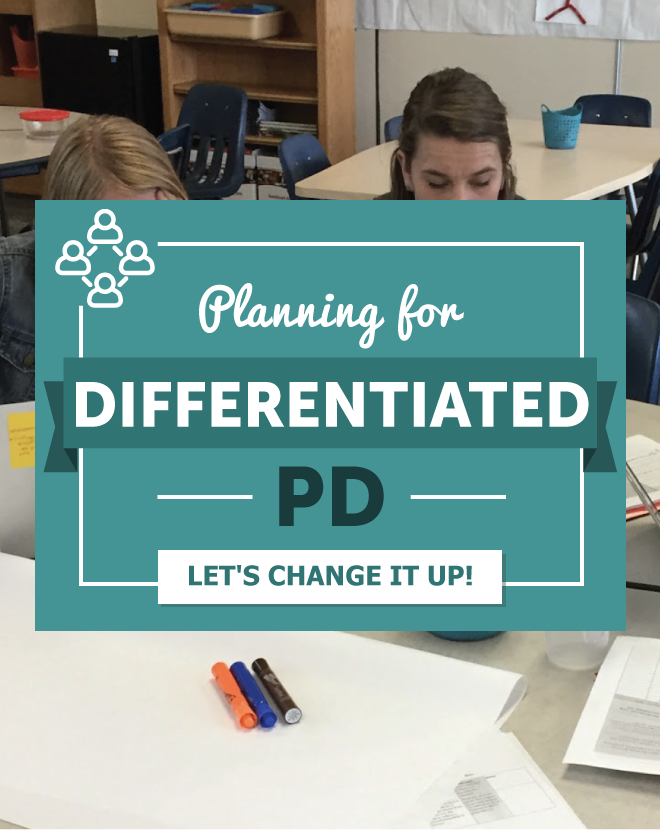
As I’m currently working through a differentiated PD cycle myself, this is a topic I’ve been thinking about lately, so I thought I’d share some thoughts.
And because it’s always more fun to see thoughts/ideas “in action”, let’s do this with a case study!
What follows are the steps we worked through to create our Differentiated PD sessions. It’s always flexible, so take a look, and let it spark some ideas for what you might do.
1. Ask for Input, yet Know your Goals
Here’s an idea. How about asking teachers what areas they feel they need more support in, or are interested in learning about?

Sometimes we (admin/leadership) think we know what’s best for teachers. We might make assumptions on their behalf because “the data says” or “it’s their first year”, which isn’t really the best way to treat teachers as professionals and engage buy-in to learning.
Yet data is important, and PD should be data driven. But it doesn’t mean that teacher voice and choice isn’t also important.
What we did is ask teachers what areas they would be interested in learning more about, that were connected to our school’s Work Plan goals. Teachers then ranked their level of interest for the different areas provided.
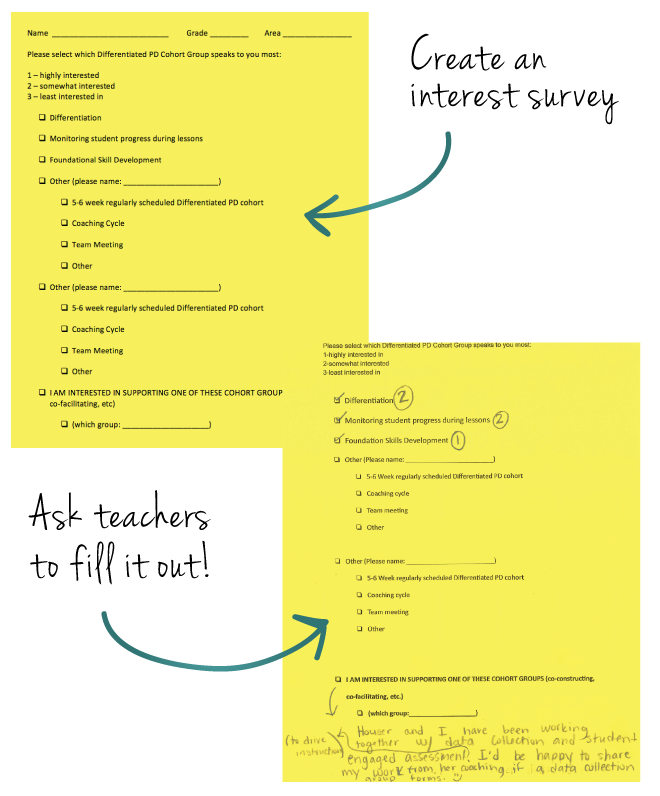
2. Consider Grouping
After we collected the completed surveys, we were able to use this feedback to form the differentiated PD groups — we called them “Learning Cohorts.”

Small groups is usually a good way to go when thinking about differentiating PD. Though there are definitely some cool ways to differentiate-it-up with technology.
Anyhow, once you’ve got your groups formed, you can start thinking about how to divvy-up the facilitation roles.
3. Calling All Teacher Leaders!

This is kinda what I feel like we did, when we asked on the Inquiry Form if teachers would be interested in facilitating/co-facilitating any of the Learning Cohorts.
And the response was a little underwhelming. Not because certain teachers didn’t have the know-how or interest, but because facilitating adult learning can be outside of their comfort zone and teachers are already super busy. So this may feel like one more thing.
In response to these challenges, you may have to more actively recruit those teacher leaders on staff. Let them know that they’re the Bomb(!), they’ve got a lot to share, and you’ve got their back in planning and facilitating.
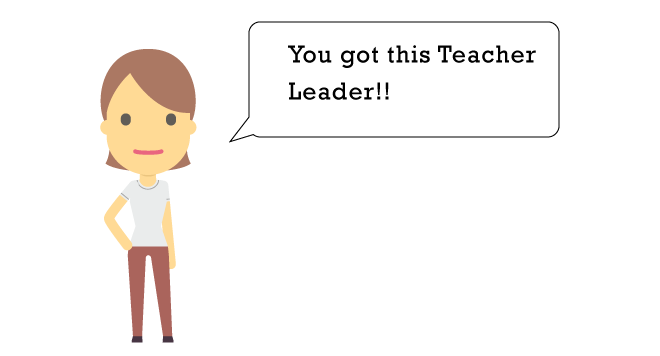
4. Stay Organized
When you have more than one PD group, several facilitators, and a range of session dates you’ve got to stay organized! Thanks a million to our school designer who took the lead on this and created two guiding documents for all of us to stay on the same page.
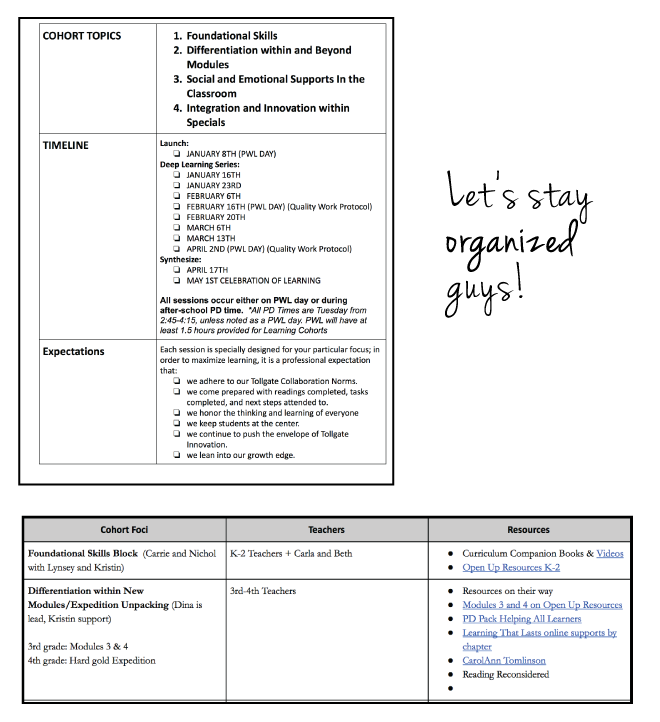
5. Fun with Format
Now it’s time to really dive into planning for the learning. Think about how to change up the format, and provide experiences/tools that will make your time with teachers highly relevant, supportive, and fun! Here are just a few ideas:
- Book Study
- Field Trips
- Live Model Lessons
- Videos
- Interactive Agenda
Here’s part of an Interactive Agenda I created for one of our sessions:
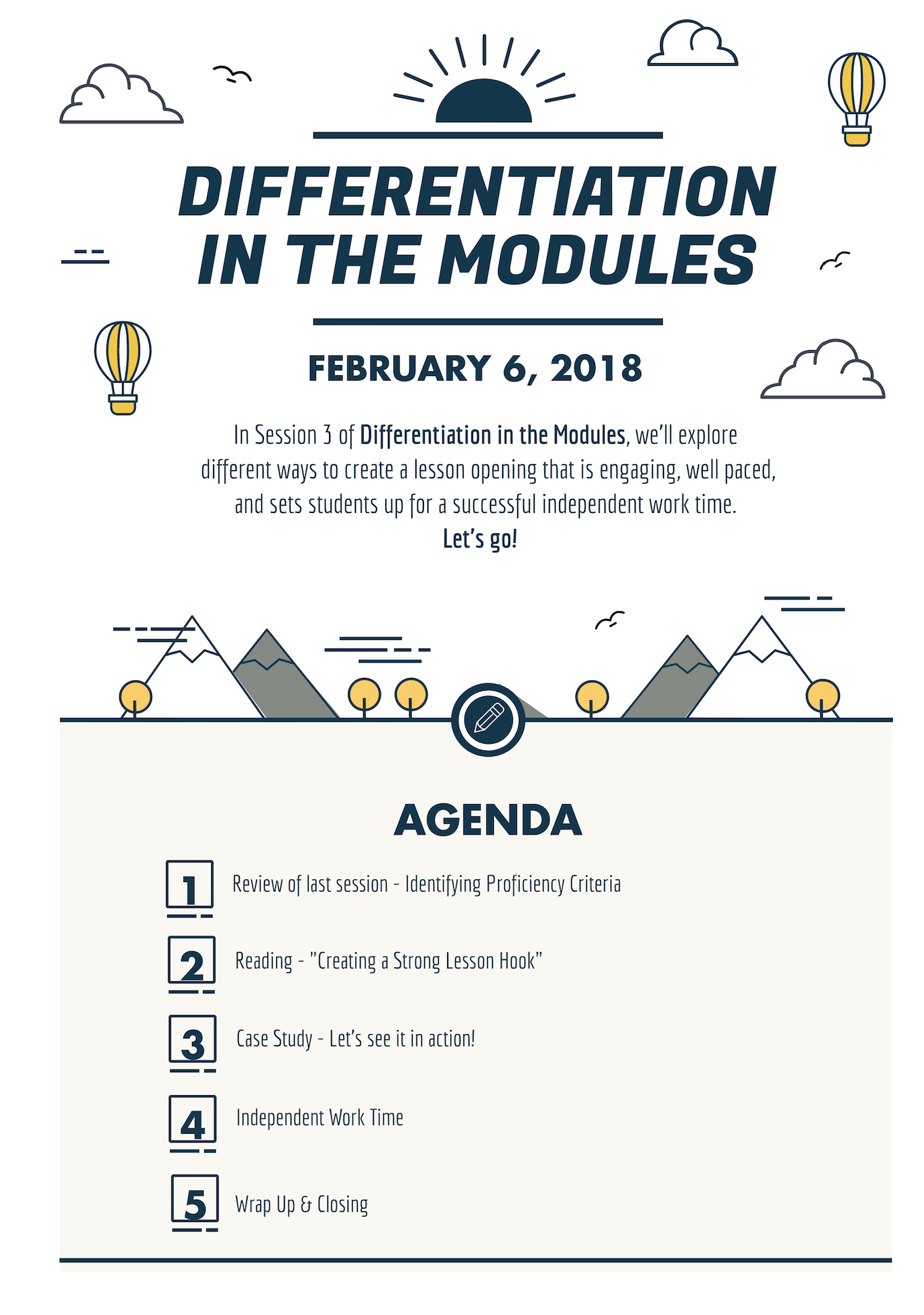
6. Monitor and Adjust
Continue to ask for feedback and differentiate along the way. We have a total of 7 Learning Cohort sessions planned, so it’s important that at the end of each session we ask teachers to fill out a quick exit ticket, so we know what to add/skip/adjust for the next session.
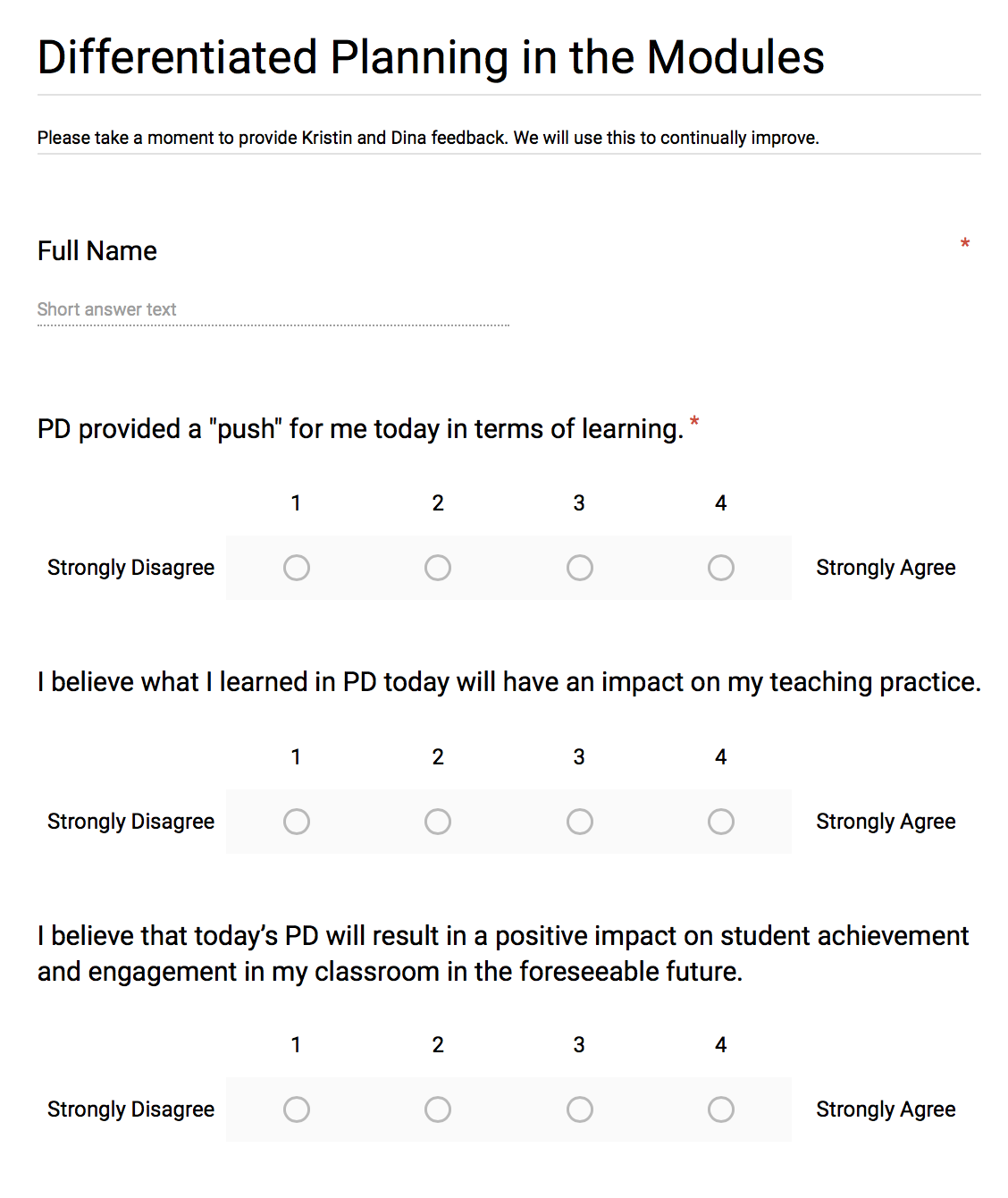
7. Celebrate!
After all this awesome learning going on in differentiated groups, plan a final session to come together, share their work, and celebrate!

Hope this post gave you some good ideas to think about how you might implement or improve any differentiated PD structures at your school(s).
Thanks for reading!
![]()
And if you’d like some more support with planning and prepping PD, check out the PD Planning Kit I’ve put together for you!

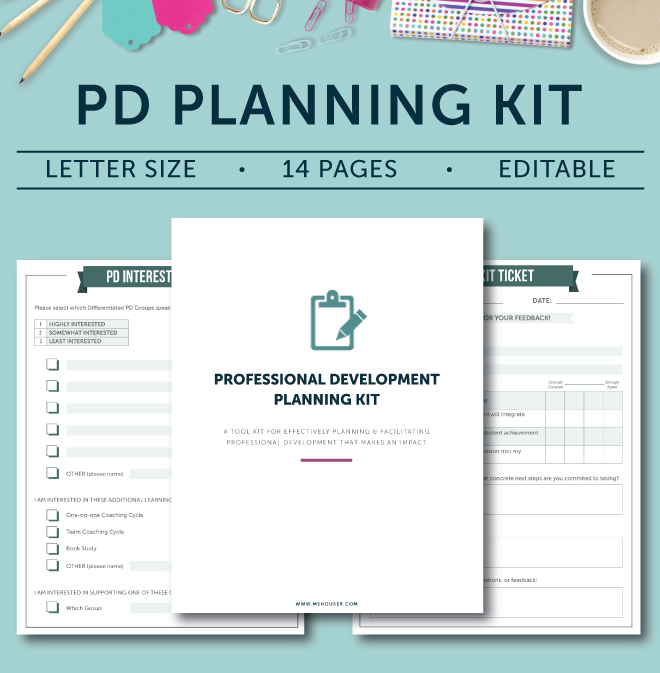
Great ideas! What did you use to make your interactive agenda? And, is there interactive functionality, or is it just more fun for us to look at? Either way, it looks great.
Hey Laura! Thanks so much for your comment. I used Piktochart to create the agenda, and yes you can add hyperlinks to it to make it interactive. It’s fun!